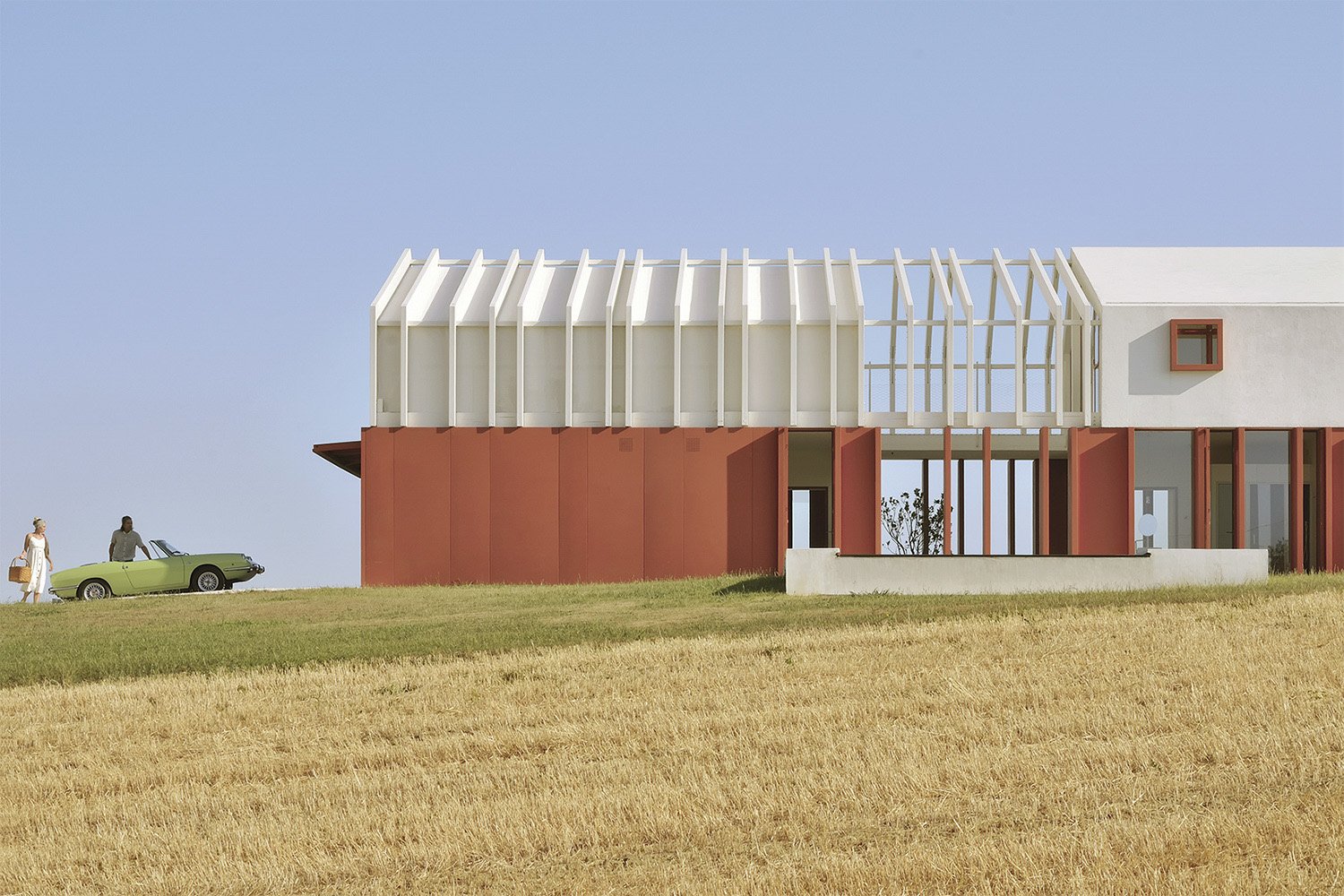#12290. Two-level facade with contrasting terracotta base and white frame structure

This modern residence exemplifies a striking harmony of contrasting materials and forms in contemporary architecture. The house features a distinctive two-level facade with a clear division between the lower section, clad in warm terracotta panels in a rich reddish-brown hue, and the upper section with an expressive white structure resembling the frame of a roof.
The facade demonstrates an interesting structural approach — the rhythmic sequence of vertical elements in the upper part creates a dynamic visual effect while allowing natural light to filter through. This architectural gesture appears to be a modern interpretation of traditional roof forms, but with a minimalist approach. The lower level with its monolithic terracotta cladding creates a sense of solidity and serves as a visual foundation for the lighter upper structure.
Particularly noteworthy is the contrasting combination of materials and colors — the rich terracotta color of the lower volume is effectively juxtaposed against the pristine white elements of the upper section and glass surfaces. Wooden elements in the window framing add warmth and a natural accent to the overall composition. Large windows and open spaces on the right side of the building indicate the architects' intention to create a close connection between interior spaces and the surrounding landscape.
When designing your own facade, several techniques from this project could be borrowed: contrasting combinations of textures and materials (light/dark, smooth/textured), using rhythmic vertical elements to create visual interest, and clear horizontal zoning of the facade by dividing it into functional or visual blocks. The integration of natural materials and large windows is also an effective way to create a modern yet cozy image for a private home.